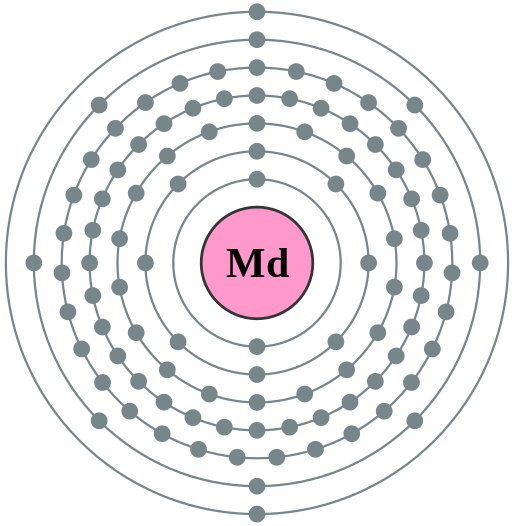Math Is Fun Forum
You are not logged in.
- Topics: Active | Unanswered
Pages: 1
#1 2025-10-10 16:32:09
- Jai Ganesh
- Administrator

- Registered: 2005-06-28
- Posts: 52,082
Mendelevium
Mendelevium
Gist
Mendelevium (Md) is a highly radioactive, synthetic element with atomic number 101, discovered in 1955. It is a transuranic element in the actinide series and is named after Dmitri Mendeleev, the father of the periodic table. Since it can only be produced in microscopic amounts by bombarding lighter elements like einsteinium with alpha particles, it has no practical uses and is used solely for scientific research.
Element 101 is Mendelevium (Md), a synthetic, radioactive metallic transuranic element in the actinide series, named after Dmitri Mendeleev, the creator of the periodic table. Discovered in 1955 by American scientists, it is produced in extremely small quantities in laboratories by bombarding einsteinium-253 with alpha particles.
Summary
Mendelevium is a synthetic chemical element; it has symbol Md (formerly Mv) and atomic number 101. A metallic radioactive transuranium element in the actinide series, it is the first element by atomic number that currently cannot be produced in macroscopic quantities by neutron bombardment of lighter elements. It is the thirteenth actinide, the ninth transuranic element, and the first transfermium; it is named after Dmitri Mendeleev, the father of the periodic table.
Like all the transfermiums, it can only be produced in particle accelerators by bombarding lighter elements with charged particles. The element was first produced in 1955 by bombarding einsteinium with alpha particles, the method still used today. Using commonly-available microgram quantities of einsteinium-253, over a million mendelevium atoms may be made each hour. The chemistry of mendelevium is typical for the late actinides, with a dominant +3 oxidation state but also a +2 oxidation state accessible in solution. All known isotopes of mendelevium have short half-lives; there are currently no uses for it outside basic scientific research, and only small amounts are produced.
Details
Mendelevium (Md) is a synthetic chemical element of the actinoid series of the periodic table, atomic number 101. It was the first element to be synthesized and discovered a few atoms at a time. Not occurring in nature, mendelevium (as the isotope mendelevium-256) was discovered (1955) by American chemists Albert Ghiorso, Bernard G. Harvey, Gregory R. Choppin, Stanley G. Thompson, and Glenn T. Seaborg at the University of California, Berkeley, as a product resulting from the helium-ion (alpha-particle) bombardment of a minute quantity (about a billion atoms) of einsteinium-253 (atomic number 99). The element was named after Russian chemist Dmitry Mendeleyev.
In about a dozen repetitions of the experiment, the team of scientists produced 17 atoms of mendelevium, which were identified by the ion-exchange adsorption-elution method (mendelevium behaved like its rare-earth homologue thulium) and by the electron-capture decay of its daughter isotope fermium-256. Fifteen other isotopes of mendelevium, all radioactive, have been discovered. The stablest is mendelevium-258 (51.5-day half-life). Studied by means of radioactive tracer techniques, mendelevium exhibits a predominant +3 oxidation state, as would be expected by its position in the actinoid series; a slightly stable +2 oxidation state is also known.
Additional Information:
Appearance
A radioactive metal, of which only a few atoms have ever been created.
Uses
Mendelevium is used only for research.
Biological role
Mendelevium has no known biological role.
Natural abundance
Mendelevium does not occur naturally. It is made by bombarding einsteinium with alpha particles (helium ions).

It appears to me that if one wants to make progress in mathematics, one should study the masters and not the pupils. - Niels Henrik Abel.
Nothing is better than reading and gaining more and more knowledge - Stephen William Hawking.
Online
Pages: 1